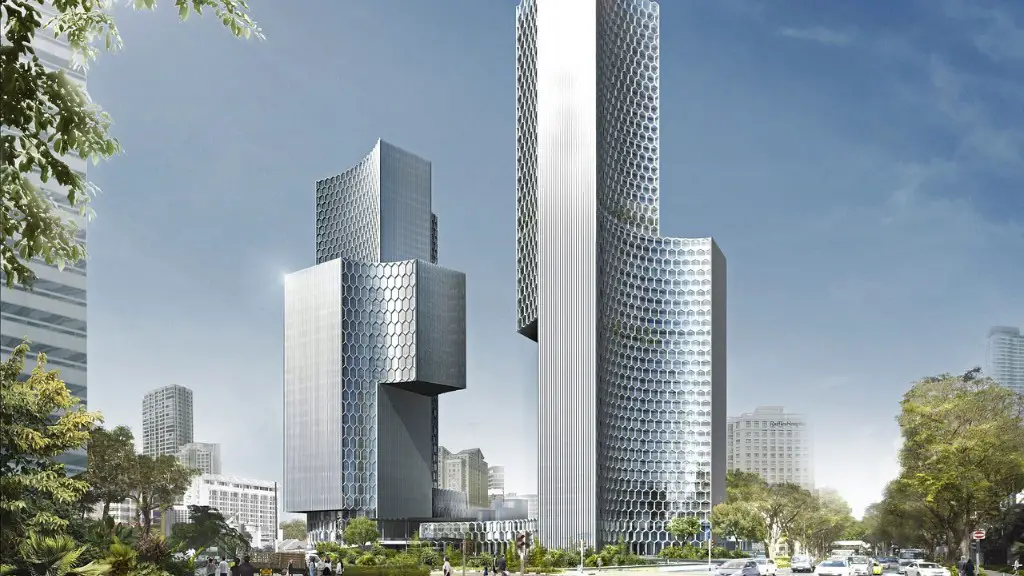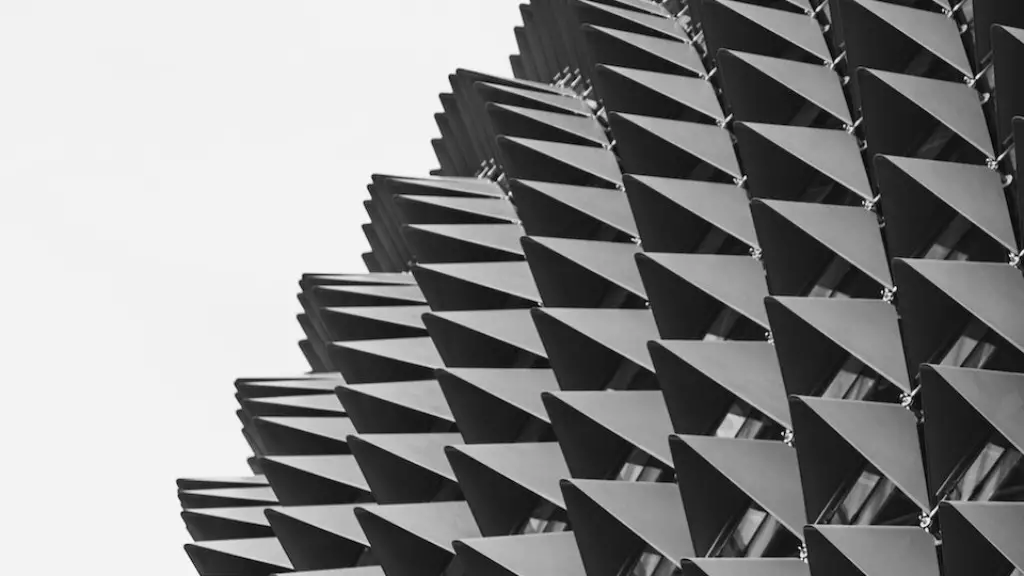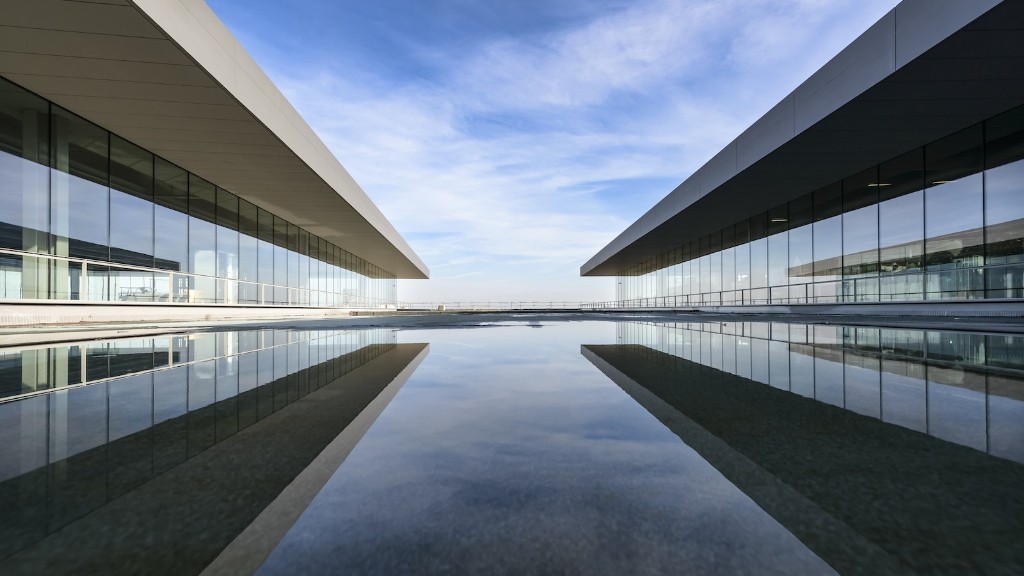Architecture is an ever-changing field that requires constant innovation and creativity to stay ahead of the industry’s ever-changing trends. In order to reach the next level of innovation, designers need to be able to come up with a concept that will revolutionize and redefine the standard building practices. Being able to find a concept in architecture is a skill that is developed through hard work, dedication, and a thorough understanding of the many facets of design that encompass the field. This article will take a look at some of the steps that will help to develop the ability to come up with innovative and unique ideas for architecture projects.
One of the first steps in developing a concept for architecture is to define the scope of the project. By clearly outlining the way that the design needs to be developed, you can ensure that you stay focused on the goals and objectives that you have in mind. It is important to identify what the project is intended to be used for, and then decide on any features or functions that may be necessary in order to achieve the desired results. This will give you the parameters and boundaries which you can use to frame your ideas.
Once the scope of the project has been established, the next step is to conduct a thorough analysis of the current market environment and trends. This will allow you to identify any potential opportunities that are uniquely suited to your project. It is important to understand which materials, patterns, textures, and technologies are available, and how they can be incorporated into your design. Understanding the current trends can be helpful in coming up with a concept that is both reflective of the present, and also has the potential to be novel and progressive. By identifying elements of the best in current practice, and looking at how they can be improved, you can start to form a concept that has an eye towards the future.
Another step in forming an innovative concept in architecture is to explore different materials and technologies to see how they can be implemented into your design. By looking at different materials and understanding how they can be used in different ways, it can help to form a concept that is not only unique and progressive, but also cost-effective. This is especially true for sustainability-oriented projects, as selecting different materials often has direct implications for the life cycle and energy efficiency of the design.
Once the scope, context and materials for the project have been established, it is also important to identify the end user of the design, and ensure that the concept is geared towards fulfilling their needs. By considering the users and understanding their motivations, it can allow for a design that is driven by the insight and user experience. By understanding the goals and requirements for the end user, many of the smaller details about the design can be tailored to best meet their expectations.
Finally, once all of the preceding steps have been completed, it is also important to consider how the design can be implemented and integrated into the natural environment. Many architectural projects are intended to become features of a larger landscape, and should blend with the landscape in a seamless manner. By considering how the natural environment can influence the design, you are ensuring that the concept is not only functional, but also visually pleasing.
Brainstorming and Prototyping
One of the most important steps in finding a concept for architecture projects is the brainstorming and prototyping process. It is only through experimentation and trial and error that you are able to identify unique ideas that have the potential to be successful. By exploring different possibilities, you can begin to form an idea of the elements that need to be considered when forming a concept. All brainstorming sessions should be conducted in an environment that is conducive to creative thinking, and often incorporate mental exercises and other techniques for enhancing innovation. After a brainstorming session has concluded, it is important to move to the prototyping phase, where physical models can be constructed in order to further explore the potential of the concept.
The prototyping process will involve utilizing different materials and technologies, and then refining the concept into a tangible representation. By experimenting with different ideas and materials, designers can gain an appreciation of how the design may look and function in the real world. This can lead to an understanding of how the details of the design will evolve as the concept is further developed, as well as allowing for additional exploration of the strengths and weaknesses of the idea.
By considering the users, the environment and the materials when going through the prototyping process, designers are able to create something that is both unique and highly functional. By understanding the goals of the end user, and by tapping into their collective experiences and perspectives, you can ensure that the design will fulfill their needs in a pleasing, efficient and sustainable manner.
Playful Thinking
An often overlooked step in the concept development phase is playful thinking. This process involves taking a step back from the formal design process and exploring potential concepts in a more informal way. By engaging in playful thinking, designers are encouraged to imagine something that does not necessarily fit within the current framework of architecture. By introducing elements of imagination and whimsy, designers can produce concepts that are out of the ordinary and help to break the mold in terms of traditional design.
Encouraging playful thinking is also beneficial in the development of concepts in architecture because it allows the designer to tap into their natural creativity and come up with ideas that they would not necessarily have thought of in a more structured environment. This type of imagination helps to bring out the individual creativity that is necessary in order to develop innovative and creative ideas that will truly revolutionize the architecture industry.
Playful thinking can also help with the development of concepts in architecture because it encourages experimentation and exploration. By engaging in this type of thinking, designers are more likely to look at their concepts from different angles, and this can offer an insight into the potential strengths and weaknesses of the ideas that have been developed.
Collaboration and Reflection
Collaboration is another important step in developing concepts in architecture, as it allows different perspectives to contribute to the creative process. By seeking the opinions of others, designers are able to gain insight into the potential problems and solutions of their concept. It is also important to conduct reflection sessions with the team, as this helps to reinforce the ideas that have been discussed, and ensure that everyone is completely on board with the concept.
Sharing ideas is also beneficial in the conceptual development process. By seeking out the opinion of your peers, it can help to form an unrestricted dialogue and allow for an honest conversation about potential ideas. This helps to ensure that the concept is both viable and practical, as well as achieving the desired aesthetic objectives. It is also important to remember that collaboration does not necessarily mean that the ideas of everyone are necessarily included in the concept, but rather that the individual ideas are being used to inform the process and bring out the creativity within the team.
Finally, engaging in personal reflection is important in helping to find a concept in architecture. By engaging in quiet reflection on your own, it allows you to gain perspective on the concept that has been developed, and offers an opportunity to hone in on any details that may not be immediately apparent. It is important to take the time to consider the concept holistically and reflect on the reasons why it was developed, as this can help to ensure that the concept meets the aesthetic, practical and budgetary requirements of the project.
Research and Documentation
Research and documentation are also key steps in finding a concept in architecture. Research is important in order to stay up-to-date on the latest trends and developments in the industry, as well as gaining an understanding of the successes and failures of previous projects. By investing the time and resources into researching projects that have had a successful outcome, it can provide valuable insight into the strengths and weaknesses of different concepts, as well as their potential longevity.
Documentation is also important in the development of a concept in architecture, as it provides a historical perspective on the process. By documenting the journey of the concept from its ideation to its implementation, it can help to inform future projects and ensure that the best parts of the process are being replicated. Documentation also helps to ensure that no important elements of the concept are missed, and can act as a record of the process.
Finally, it is also important to consider the opinions of the experts when conducting research and document the processes. By seeking out the input of those who have experience in the field, they are able to offer advice on how to best implement the concept, as well as any potential obstacles that may be encountered. Seeking out the expert opinion also helps to ensure that the concept is feasible, and offers guidance to ensure that it meets the necessary codes and regulations.
Testing and Evaluation
Testing and evaluation are integral steps in finding a concept in architecture. Testing allows for a more practical assessment of the concept, and can provide valuable data on the potential feasibility and strength of the design. By testing the concept through physical models and simulations, designers are able to identify any potential problems and issues that may arise from the design prior to its implementation.
Evaluation is also important in the concept development process, as it allows for a subjective assessment of the design. By making a conscious effort to evaluate the concept based on aesthetic and social factors, designers are able to identify any issues that may impede the success of the design, and make sure that the concept will stand up to public scrutiny. Evaluation is also important in order to ensure that the concept adheres to any codes or regulations that may be applicable to the project.
Testing and evaluation are important steps in the concept development process, as they allow the designer to gain insight into the potential strengths and weaknesses of a design prior to its implementation. By ensuring that the concept is thoroughly tested and evaluated, designers are able to identify any potential issues prior to its implementation, as well as ensuring that the design is both aesthetically pleasing and structurally sound.
Synthesis and Iteration
Synthesis and iteration are also key steps in finding a concept in architecture. Synthesis involves combining the ideas and materials that have been established during the research and documentations steps in order to produce a concept that is both functional and aesthetically pleasing. Synthesis allows for a creative outlet and encourages the exploration of ideas that may not have been previously considered. It is at this stage that designers can explore the potentials of the concept, as well as introducing elements of whimsy and imagination that can help to make the design truly unique.
Iteration is then used to continuously refine the concept in order to make sure that it is meeting the requirements of the project, and also to ensure that the concept is up-to-date with the latest industry trends. By continuously modifying and adjusting the design based on the feedback that is being received, architects are able to produce concepts that are able to stand the test of time and are resilient to the ever-changing trends in the industry.
Synthesis and iteration are important steps in finding a concept in architecture, as they allow designers to accurately define the concept and make sure that it meets the criteria of the project. By exploring different possibilities through synthesis and then refining the concept through iteration, designers can ensure that the concept is both suited to the specific needs of the project and also reflects the latest developments in the industry.





